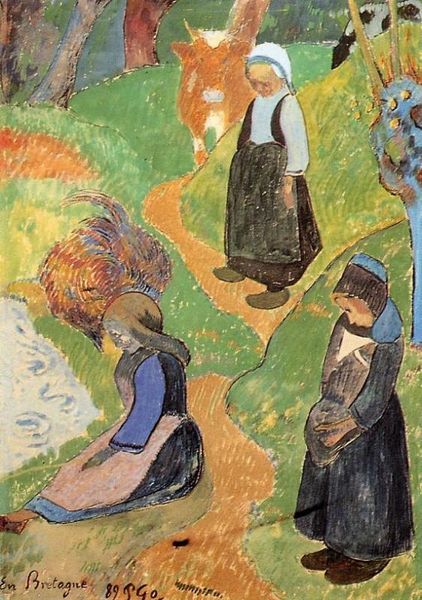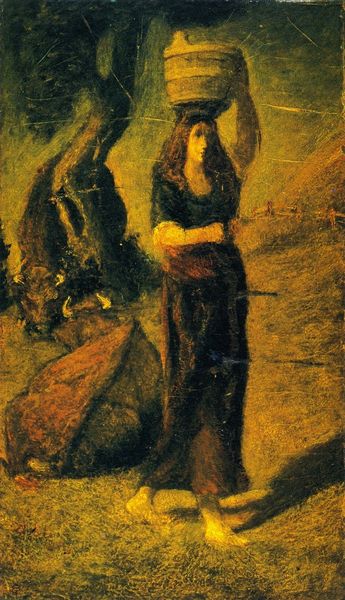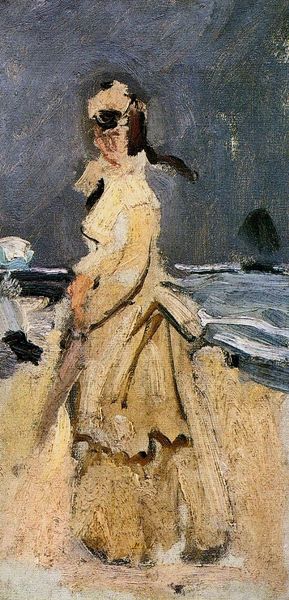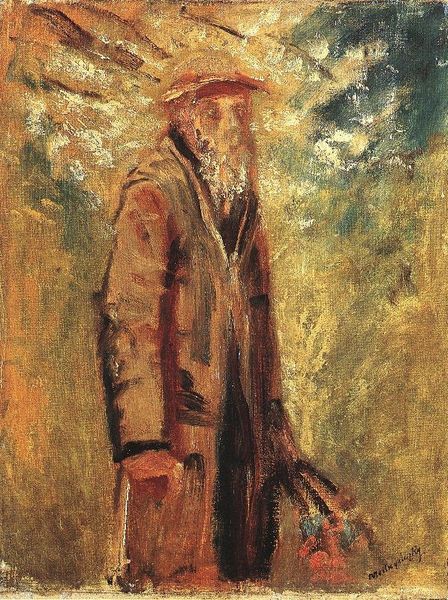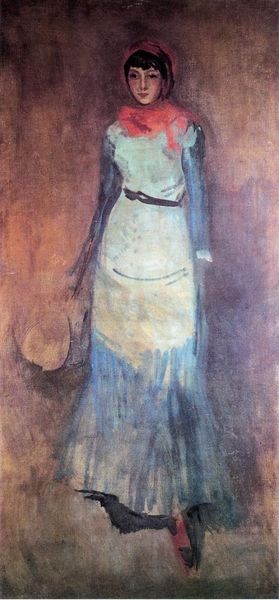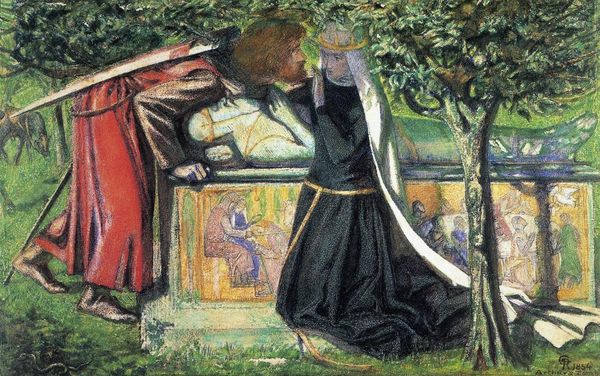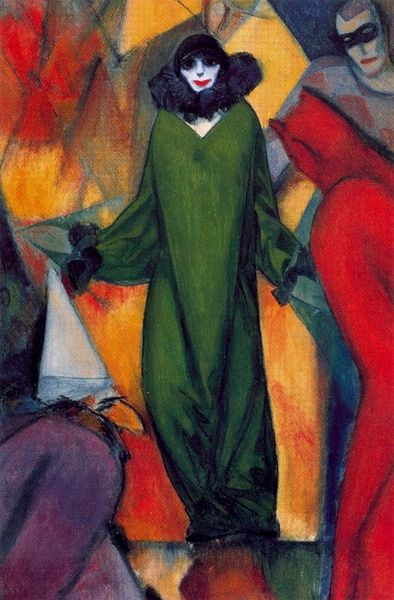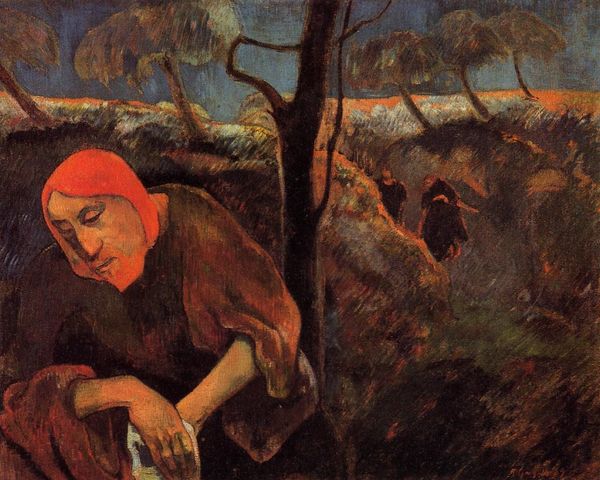
painting, oil-paint
#
portrait
#
allegories
#
symbol
#
painting
#
oil-paint
#
dog
#
landscape
#
figuration
#
handmade artwork painting
#
symbolism
#
post-impressionism
Dimensions: 134 x 62.9 cm
Copyright: Public domain
Curator: Gauguin’s "Jeanne d'Arc, or Breton girl spinning," an oil on canvas painted in 1889, immediately strikes me. There’s something unsettling yet captivating about it. The palette is bold but slightly muted, almost dreamlike. Editor: Yes, and the vertical format adds to the dreamlike quality you mentioned; a certain symbolic weight as well. Gauguin, throughout his career, really engaged with the narratives surrounding women and how those intersect with political themes. What I find interesting here is his attempt to reimagine Joan of Arc in a local, Breton setting. Curator: Exactly. Placing the heroine in a very specific regional identity changes the narrative quite significantly. I'm interested in this image through the lens of feminism and post-colonial theory. Here is a woman—possibly on the cusp of adulthood, but whose historical counterpart represents great power, military and spiritual authority—placed humbly in a regional folk setting. She has power, but not the sort that shapes nations. Editor: I wonder what Gauguin's engagement with folk culture tells us about the institutions and sociopolitical trends of art making at the time. The symbolist elements really reinforce his interest in Breton culture as separate and authentic from dominant French culture. He exhibited in cafes and cultivated collectors of diverse social standing. We have to consider the implications for his market at the time, a crucial element in his decision-making. Curator: Certainly, but his artistic choices also resonate with the period's anxieties about tradition, identity, and the rise of modernism. Breton identity, folk art and Joan of Arc served as both political tools and marketable exoticisms. Gauguin’s symbolism here seems a comment on how female identity gets shaped both from external patriarchal structures, and perhaps is reshaped again by regional cultural identity and resistance to authority. Editor: This artwork reminds me of debates around regional art. How do we balance a focus on artistic intention with broader economic and social contexts when thinking about folk art? Curator: It does raise complex questions about cultural representation and appropriation. Editor: I agree. A fascinating point of conversation, indeed. Curator: Absolutely. There's so much to unpack.
Comments
No comments
Be the first to comment and join the conversation on the ultimate creative platform.

